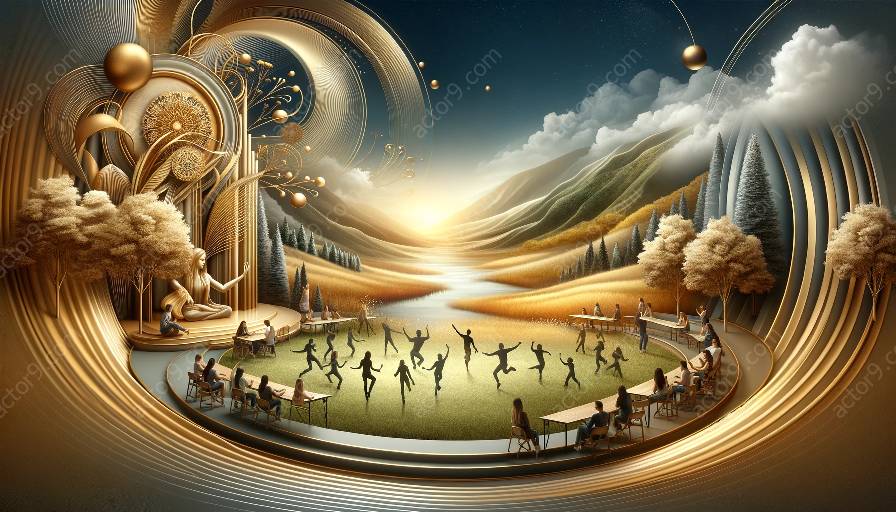Physical theatre has become a significant aspect of performing arts education, offering unique challenges and opportunities in a university environment. In this topic cluster, we will explore the impact of physical theatre in education, its role in developing performance skills, and the specific challenges and opportunities it presents to educators and students.
Understanding Physical Theatre
Physical theatre is a form of performance that emphasizes the body and movement as expressive tools. It often involves the use of dance, mime, acrobatics, and acting to convey emotions, narratives, and ideas without relying heavily on spoken language. This interdisciplinary approach to performance requires a deep understanding of the body, space, and the connection between physical and emotional expression.
Impact of Physical Theatre in Education
Teaching physical theatre in a university environment provides students with a unique opportunity to explore new avenues of creative expression and develop a deeper understanding of the physicality of performance. It encourages them to step out of their comfort zones, challenge their physical and emotional boundaries, and develop a strong sense of presence and embodiment on stage. Furthermore, incorporating physical theatre into the curriculum can enhance students' collaborative skills, as it often involves ensemble work and physical coordination among performers.
Challenges of Teaching Physical Theatre
One of the primary challenges of teaching physical theatre in a university setting is the diverse range of physical abilities and backgrounds among students. It requires educators to create a safe and inclusive learning environment that allows students to explore and express themselves physically without fear of judgment or exclusion. Additionally, teaching physical theatre often demands a high level of physical fitness and stamina, which can be demanding for both students and instructors.
Opportunities for Growth
Despite the challenges, teaching physical theatre presents numerous opportunities for personal and artistic growth. By engaging in physical theatre training, students can develop a heightened kinesthetic awareness, emotional expressiveness, and bodily control, which are valuable skills for performers in any discipline. Moreover, the collaborative nature of physical theatre fosters a strong sense of community, mutual respect, and empathy among students, contributing to their overall personal and professional development.
Integration into the Curriculum
Integrating physical theatre into the university curriculum requires a thoughtful approach that acknowledges its interdisciplinary nature. It can be incorporated into theatre, dance, and performance studies programs, as well as cross-disciplinary courses that explore the intersection of physicality, expressive movement, and storytelling. By offering specialized courses and workshops in physical theatre, universities can cater to the diverse interests and career aspirations of performing arts students.
Conclusion
Teaching physical theatre in a university environment presents educators and students with a dynamic blend of challenges and opportunities. Through careful planning, inclusive teaching methods, and a focus on personal and artistic growth, physical theatre can enrich the educational experience, empower students to embrace their physicality, and foster a deep appreciation for the expressive potential of the human body in performance.




































